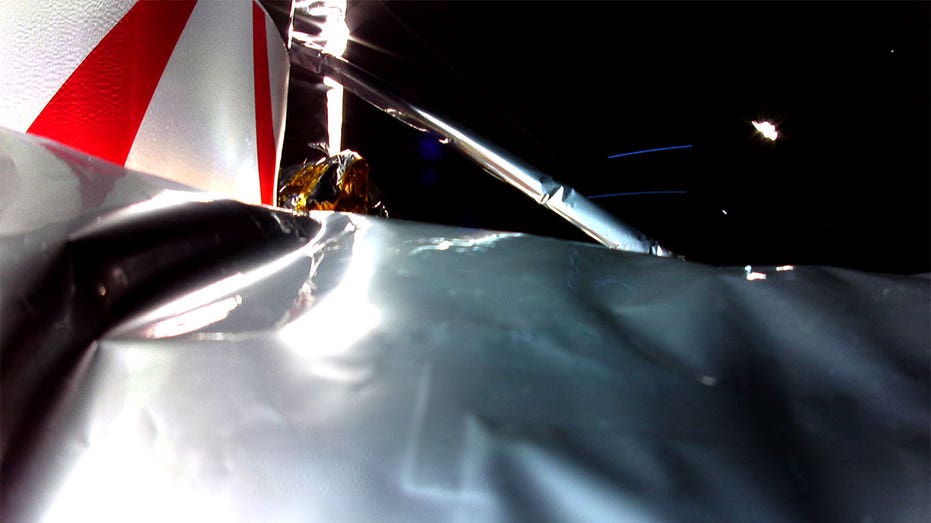Crippled US moon landing mission carrying human remains to crash to Earth
The private space technology company is planning to soften the malfunctioning vessel's crash
The compromised space vessel originally intended to place the ashes of "Star Trek" cast members on the surface of the moon is being prepared for a controlled crash back to Earth.
Astrobotic, the private space robotics company hired by Celestis and NASA to assist in the operation, released an update on the planned crash in the Pacific Ocean.
"Astrobotic has positioned the Peregrine spacecraft for a safe, controlled re-entry to Earth over a remote area of the South Pacific," the company wrote in an update on its website. "The team has been continuously monitoring our re-entry analysis with NASA, which indicates a re-entry path over the indicated area below, with no anticipated hazards.
MOON LANDING: 'NO CHANCE' OF SOFT LUNAR LANDING FOR US MISSION AFTER CRITICAL FAILURE

The United Launch Alliance's Vulcan Centaur lifts off from Space Launch Complex 41d at Cape Canaveral Space Force Station in Cape Canaveral, Florida, for its maiden voyage, while carrying Astrobotic's Peregrine lunar lander. (CHANDAN KHANNA/AFP via Getty Images / Getty Images)
"A safe re-entry is our top priority, so the team developed a two-step maneuver to move the spacecraft and change its projected trajectory. "
In an update on Jan. 9, Astrobotic Technology said "Given the propellant leak, there is, unfortunately, no chance of a soft landing on the Moon."
US MOON LANDING MISSION IN JEOPARDY DUE TO ‘CRITICAL LOSS’ OF FUEL
Peregrine blasted off on a United Launch Alliance Vulcan rocket from Cape Canaveral Space Force Station in Cape Canaveral, Florida, on Monday, Jan. 8.
In addition to the NASA payloads, the Peregrine lander was loaded with the remains of several "Star Trek" cast members and the DNA of former President John F. Kennedy, among others, Sky News reported.
However, the mission went sideways when a failure in the spacecraft's propulsion system caused a "critical loss of failure" that forced Astrobotic to abandon its moon landing mission.

The first shot of space taken by the Astrobotic Peregrine MIssion One lander. The Multi-Layer Insulation can be seen in the foreground, which Astrobotic says is a visual clue that aligns with telemetry data pointing to a propulsion system anomaly. (Astrobotic / Fox News)
CLICK HERE TO READ MORE ON FOX BUSINESS
Before the announcement of the "anomaly," Astrobotic said the Peregrine craft would attempt a landing on the moon on Feb. 23.
Astrobotic released the first image taken by Peregrine in space, which showed the Multi-Layer Insulation in the foreground.
"As re-entry is now targeted for Thursday, we are moving our previously scheduled media telecon to Friday, January 19 at 1 pm (US Eastern time) to provide a comprehensive mission update," Astrobotic announced.
FOX Business' Chris Pandolfo contributed to this report.




















